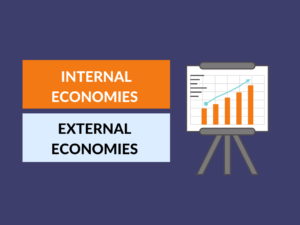Differences Between Perfect Competition and Monopolistic Competition
What is Perfect Competition?
Perfect competition refers to a market structure where numerous firms compete against each other. It is characterized by several key features such as a large number of buyers and sellers, homogenous products, ease of entry and exit, perfect information, and no barriers to entry or exit.
Examples of Perfect Competition
1. Agricultural Markets: Farmers producing staple crops and selling them to wholesale buyers.
2. Stock Exchanges: Trading of publicly listed company shares in a highly transparent environment.
3. Online Retail: Numerous small online retailers selling similar products with low barriers to entry.
What is Monopolistic Competition?
Monopolistic competition refers to a market structure where multiple firms operate in an industry, but each offers slightly different products. It is characterized by product differentiation, relatively easy entry and exit, limited pricing power, and the presence of imperfect information.
Examples of Monopolistic Competition
1. Fast Food Restaurants: Burger chains like McDonald’s, Wendy’s, and Burger King.
2. Beverage Industry: Soft drink companies like Coca-Cola and PepsiCo.
3. Clothing Retail: Fashion brands like Zara, H&M, and Forever 21.
Key Differences between Perfect Competition and Monopolistic Competition:
| Difference Area | Perfect Competition | Monopolistic Competition |
|---|---|---|
| Number of Firms | Large number of firms | Relatively large number of firms |
| Product Differentiation | Homogeneous products | Slight product differentiation |
| Influence on Price | No pricing power | Some pricing power due to product differentiation |
| Barriers to Entry | No barriers to entry | Relatively low barriers to entry |
| Market Power | No market power | Limited market power |
| Nature of Products | Homogeneous products | Slightly differentiated products |
| Information Transparency | Perfect information available to all market participants | Imperfect information due to product differentiation |
| Cross-Price Elasticity | High cross-price elasticity | Lower cross-price elasticity |
| Profit Maximization | Only economic profit is pursued | Both economic and non-economic profit may be pursued |
| Market Equilibrium | Equilibrium is quickly reached | Equilibrium may take longer to reach due to product differentiation |
Conclusion:
In summary, perfect competition and monopolistic competition are both market structures that involve multiple firms. However, perfect competition is characterized by homogeneous products, no pricing power, and perfect information, while monopolistic competition involves slight product differentiation, some pricing power, and imperfect information. Understanding these key differences helps in comprehending the workings and dynamics of different markets.
People Also Ask:
1. Are there any real-world examples of perfect competition?
While perfect competition is an idealized market structure that is rarely found in its pure form, examples can be seen in agricultural markets, stock exchanges, and online retail where there are large numbers of buyers and sellers of similar products without significant barriers to entry.
2. How does monopolistic competition differ from a monopoly?
Unlike a monopoly where a single firm dominates the market and has extensive market power, monopolistic competition features multiple firms with relatively limited market power due to the presence of competition and product differentiation.
3. Why do firms in monopolistic competition engage in product differentiation?
Firms in monopolistic competition differentiate their products in order to stand out from competitors and create a perceived value among consumers. This allows them to charge a slight premium price and differentiate their offerings from others in the market.
4. Are there any benefits of monopolistic competition?
Monopolistic competition encourages innovation and product diversity as firms attempt to differentiate themselves from others. It also provides consumers with a wider range of product choices and can lead to lower prices due to competition.
5. How do market structures impact pricing?
Market structures influence pricing by determining the level of competition, the degree of product differentiation, and the bargaining power of firms. In perfect competition, prices are determined by market forces of supply and demand, while in monopolistic competition, firms have some pricing power due to product differentiation.



